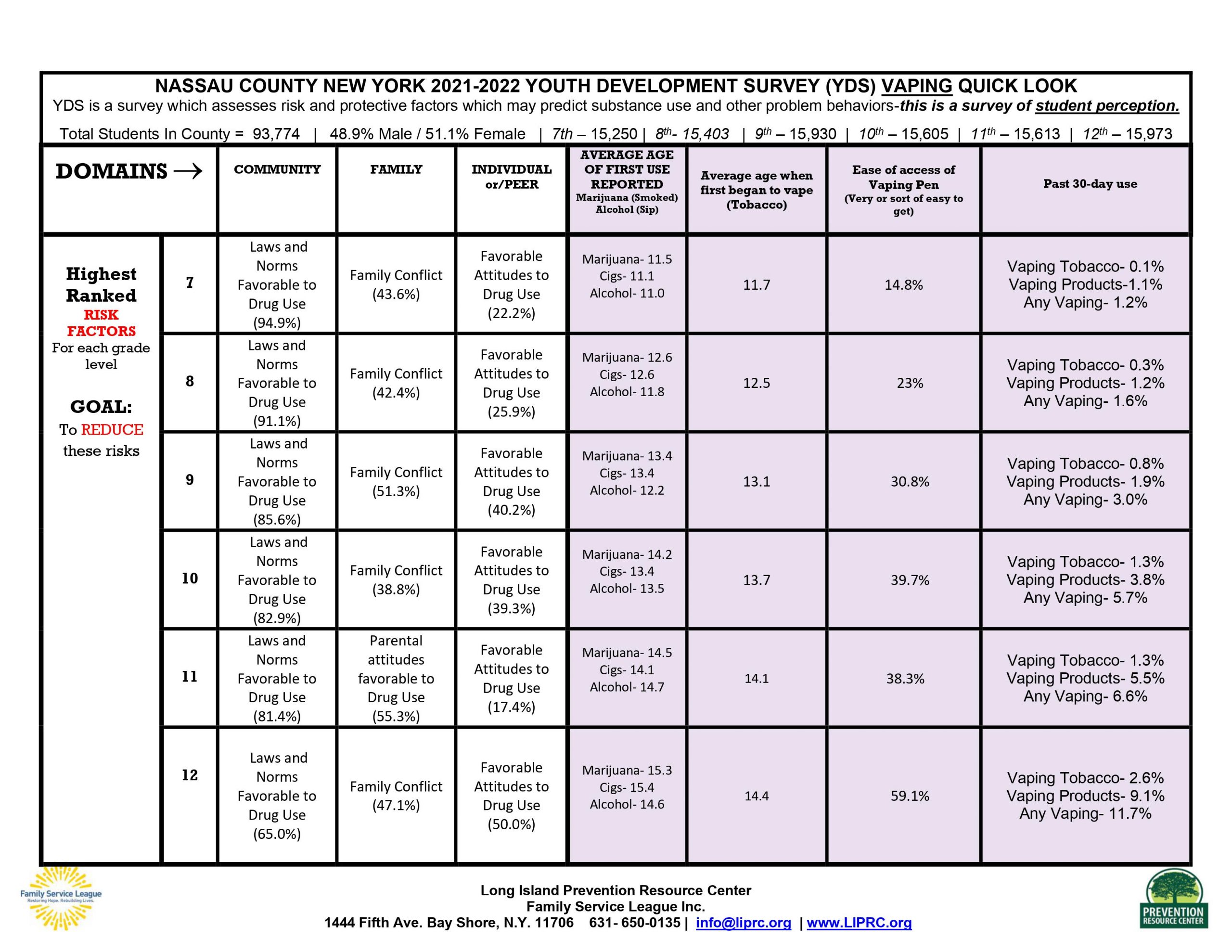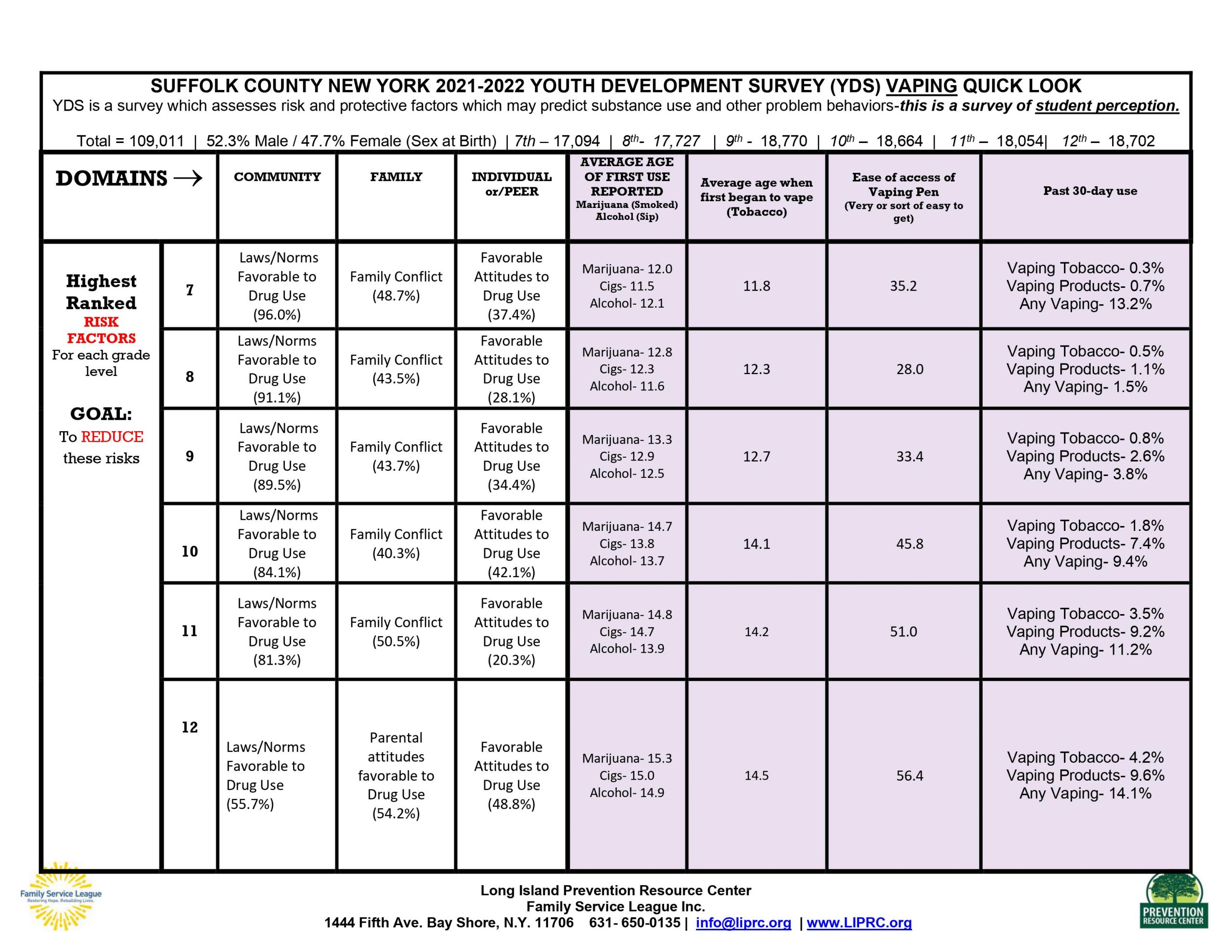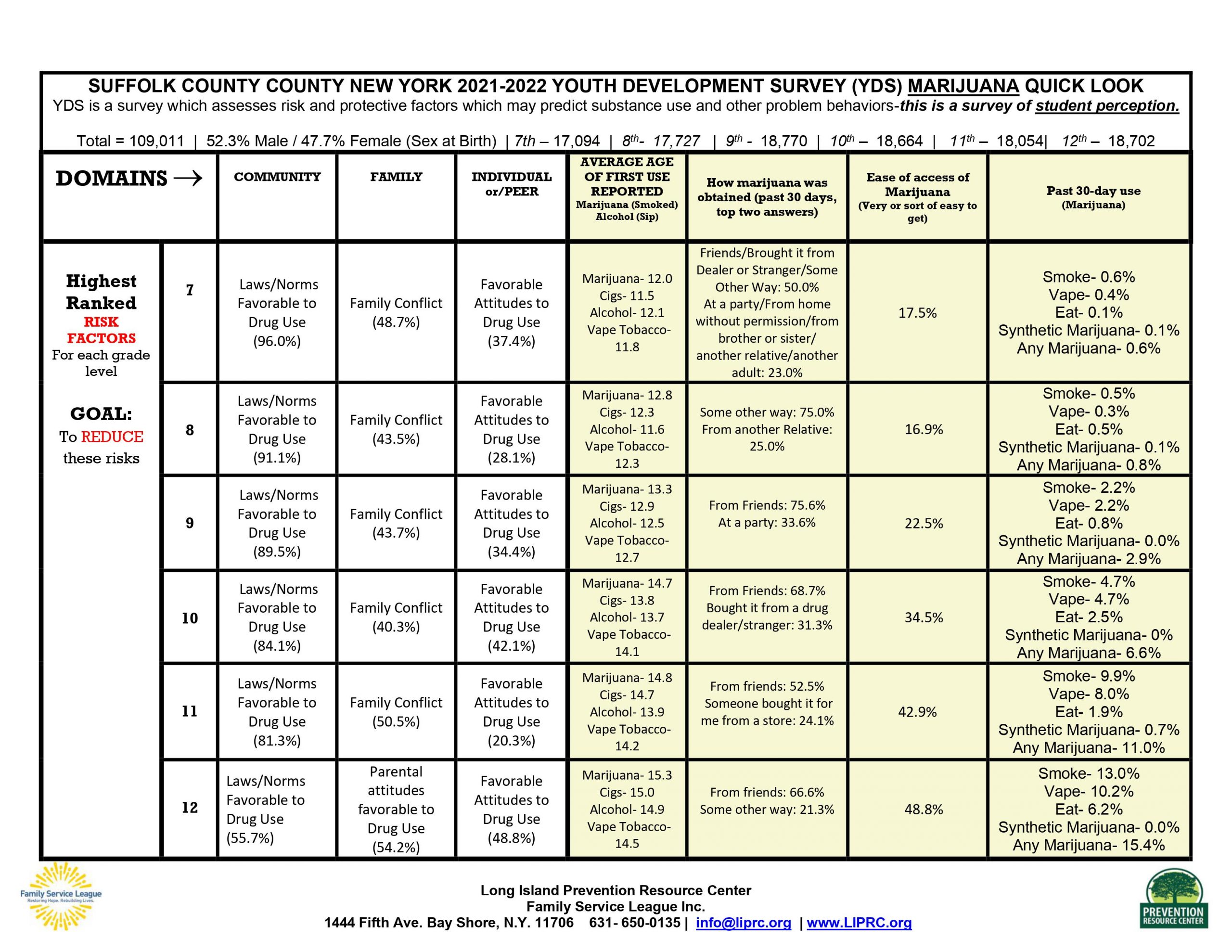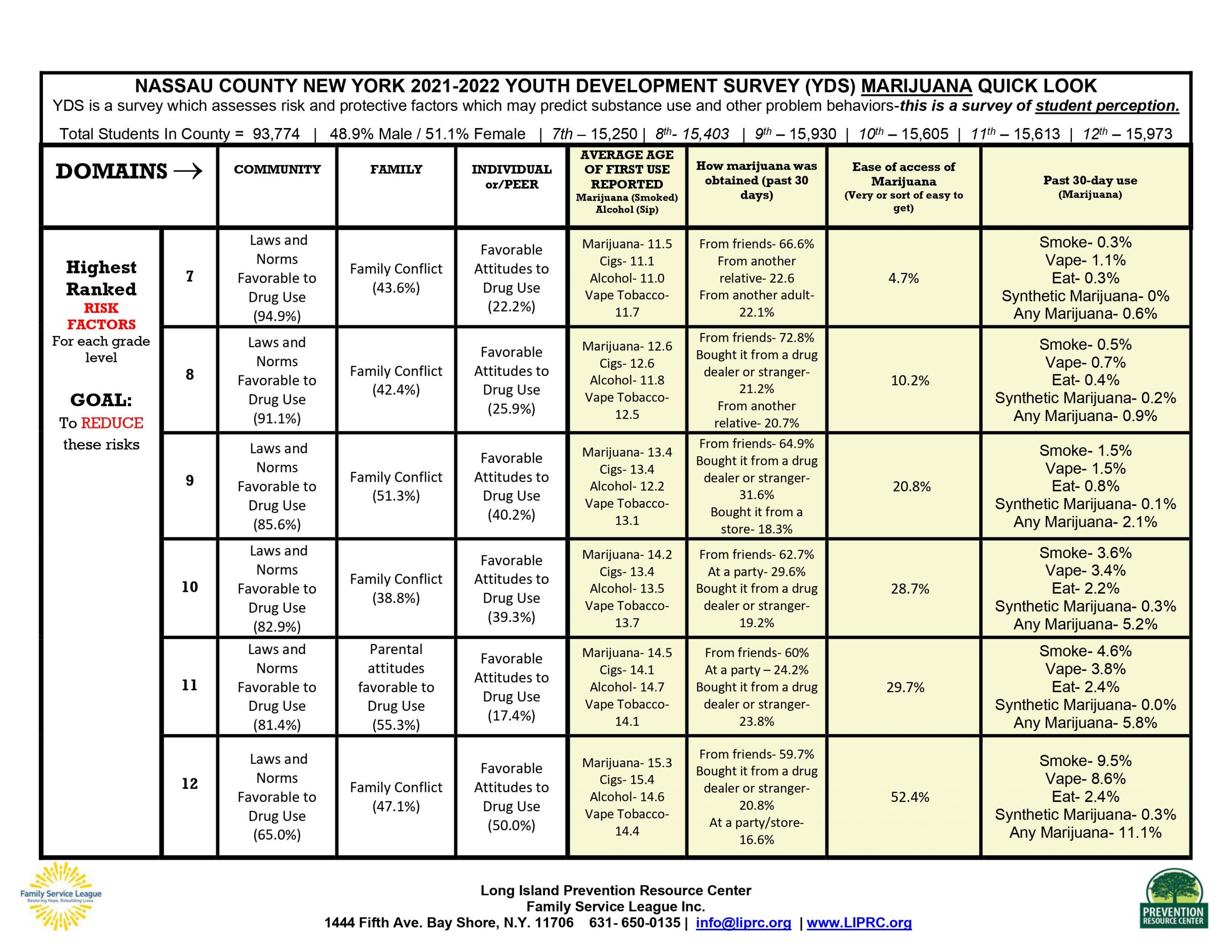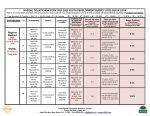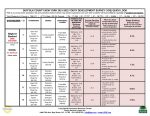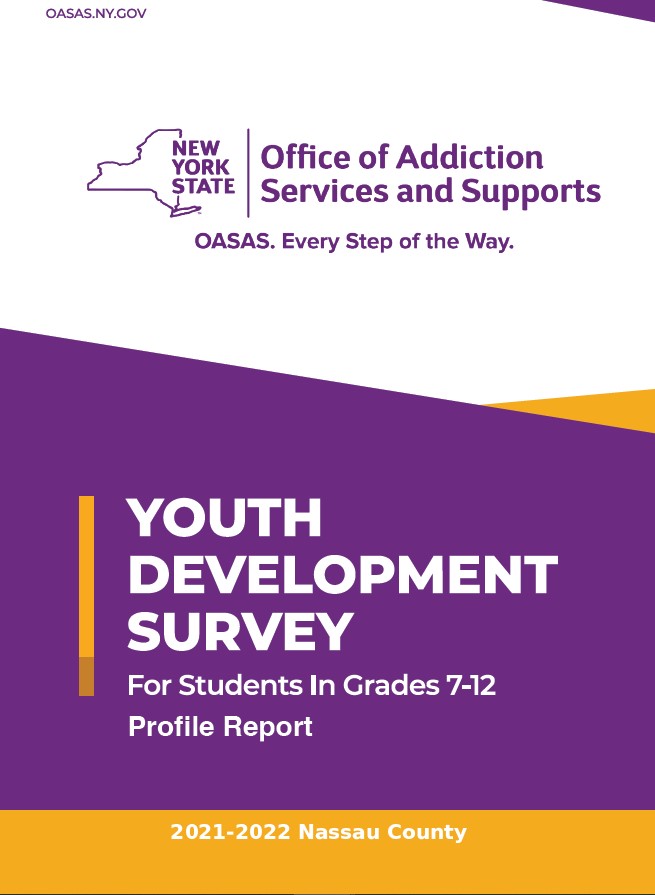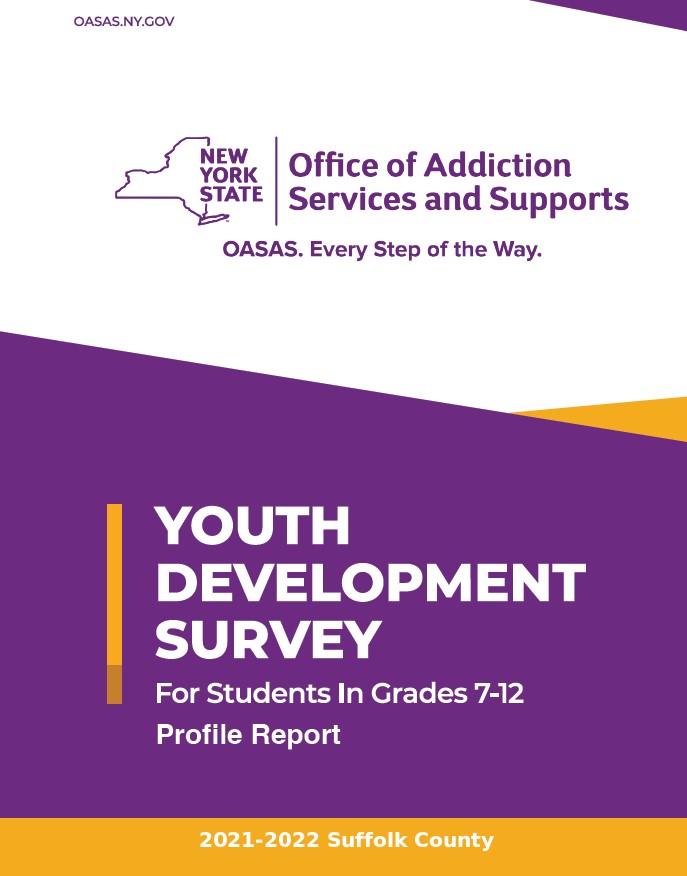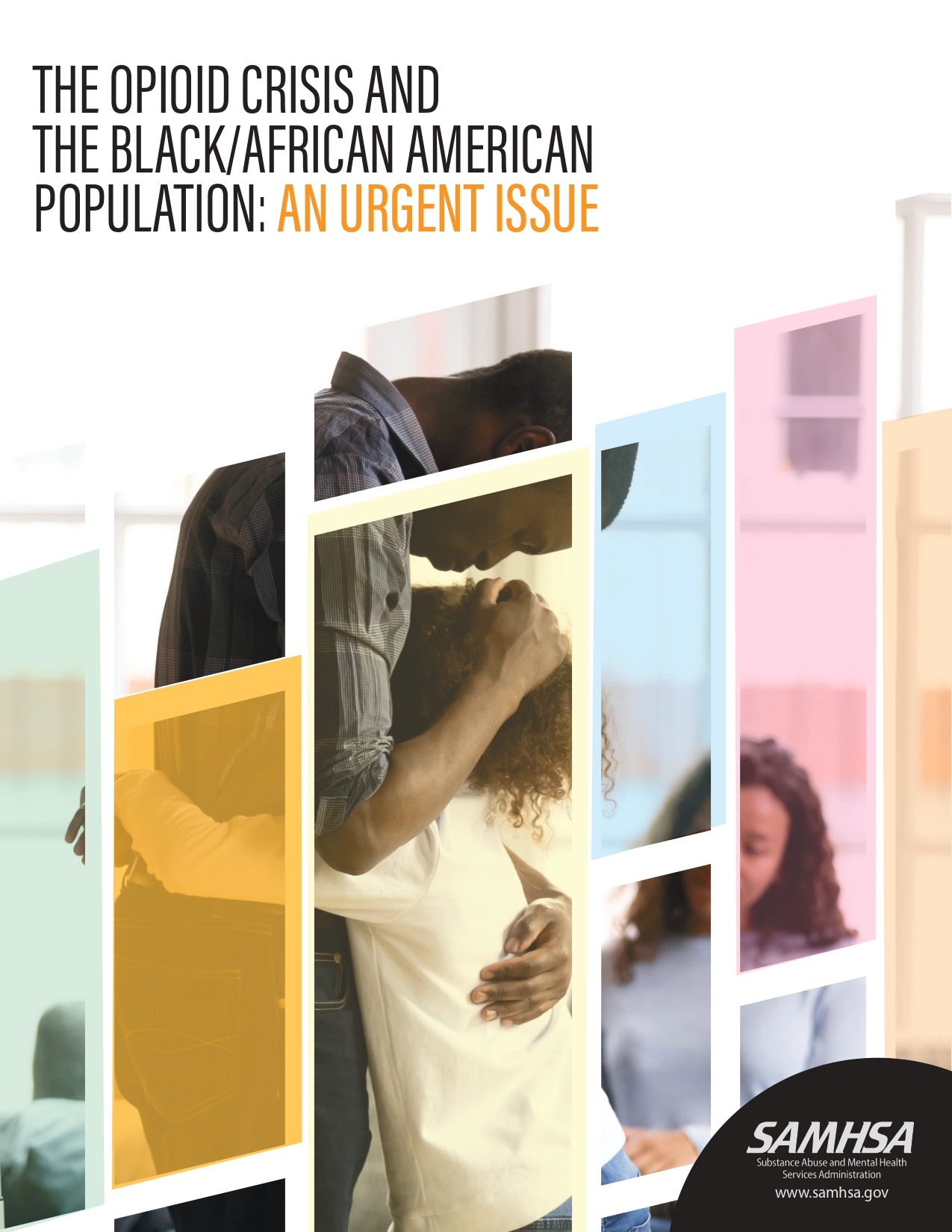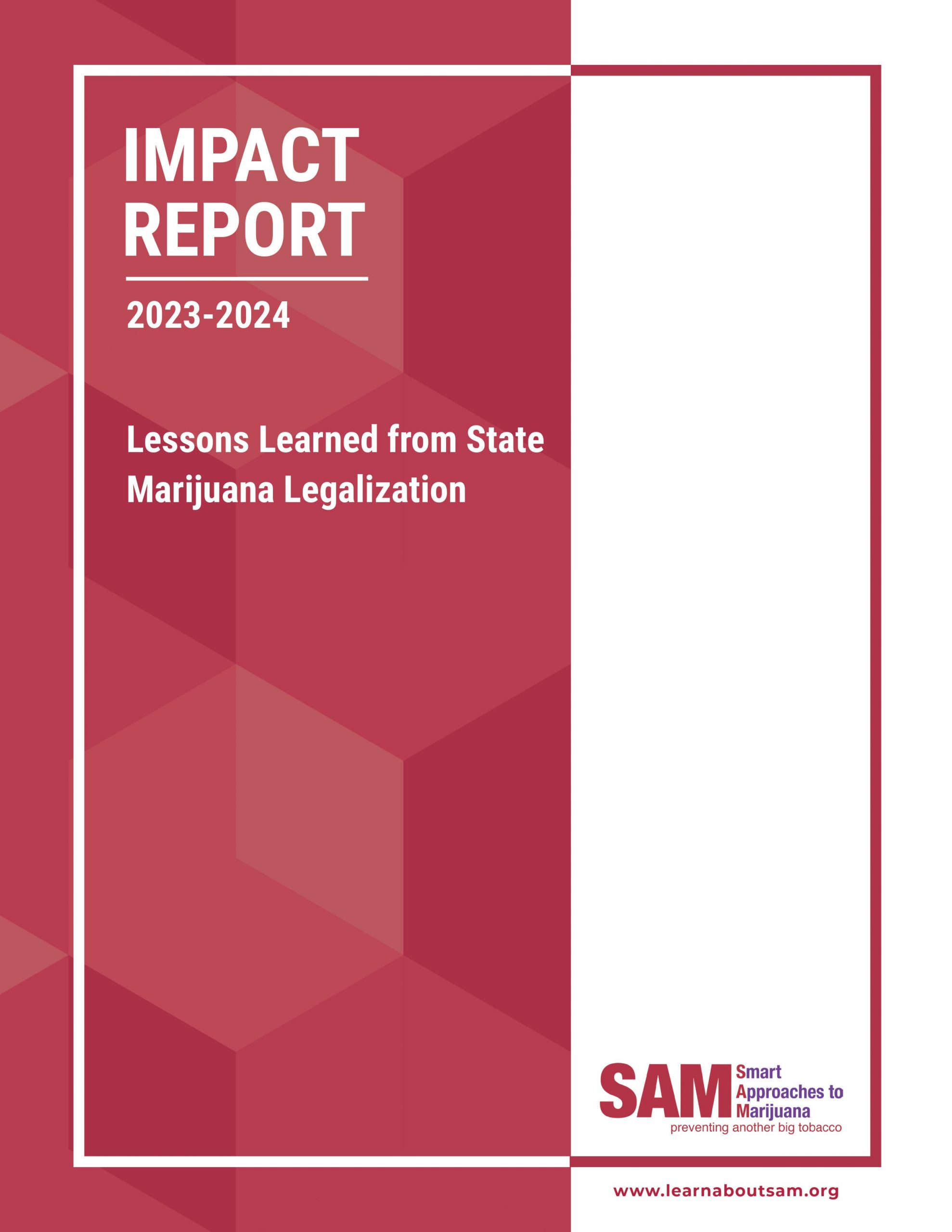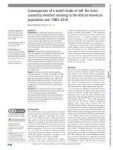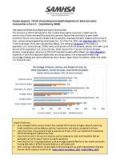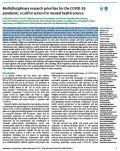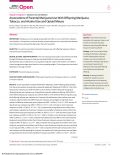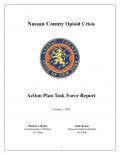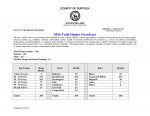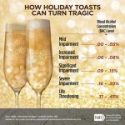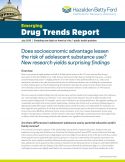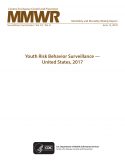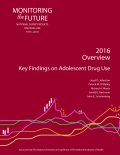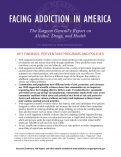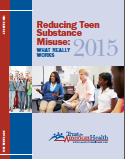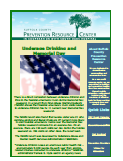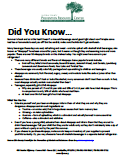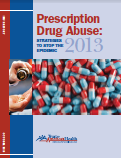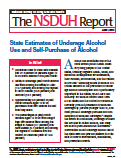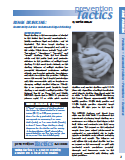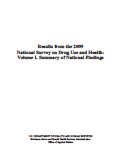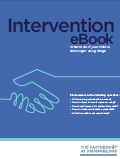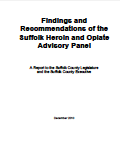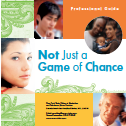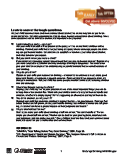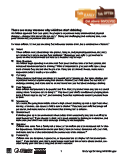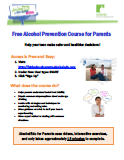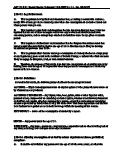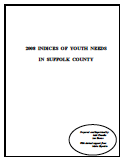Nassau County Youth Development Survey (YDS) 2021- 2022 VAPING Quicklook
This Quicklook contains data related to vaping use from the recent 2021-2022 Nassau County Youth Development Survey (YDS) 2021- 2022.
Suffolk County Youth Development Survey (YDS) 2021- 2022 VAPING Quicklook
This Quicklook contains data related to vaping use from the recent 2021-2022 Suffolk County Youth Development Survey (YDS) 2021- 2022.
Suffolk County Youth Development Survey (YDS) 2021- 2022 MARIJUANA Quicklook
This Marijuana Quicklook contains data related to marijuana use from the recent 2021-2022 Suffolk County Youth Development Survey (YDS) 2021- 2022.
Nassau County Youth Development Survey (YDS) 2021- 2022 MARIJUANA Quicklook
This Marijuana Quicklook contains data related to marijuana use from the recent 2021-2022 Nassau County Youth Development Survey (YDS) 2021- 2022.
Nassau County Youth Development Survey (YDS) 2021- 2022 Quicklook
This document outlines some of the key findings from Nassau County’s 2021-2022 Youth Development Survey (YDS) including highest risk factor, lowest protective factor, age of first use of various drugs and alcohol, sources of alcohol, and binge drinking rates. This was developed by the Long Island Prevention Resource Center.
Suffolk County Youth Development Survey (YDS) 2021-2022 Quicklook
This document outlines some of the key findings from Suffolk County’s 2021-2022 Youth Development Survey (YDS) including highest risk factor, lowest protective factor, age of first use of various drugs and alcohol, sources of alcohol, and binge drinking rates. This was developed by the Long Island Prevention Resource Center.
Nassau County Youth Development Survey (YDS) Results 2021-2022
The New York State Youth Development Survey (NYSYDS) measures important indicators of student behaviors related to student safety, development and well being. This report summarizes findings from the NYSYDS, which was conducted during the 2021-22 school year. Many of the questions asked about a student’s involvement with alcohol, tobacco and other drugs, which continues to be a persistent problem facing the youth of America. The survey
also assessed risk and protective factors that predict problem behaviors (Arthur, 2002; Hawkins,
1992) as well as positive student outcomes. (Arthur, 2015) for grades 7 to 12.
Suffolk County Youth Development Survey (YDS) Results 2021-2022
The New York State Youth Development Survey (NYSYDS) measures important indicators of student behaviors related to student safety, development and well being. This report summarizes findings from the NYSYDS, which was conducted during the 2021-22 school year. Many of the questions asked about a student’s involvement with alcohol, tobacco and other drugs, which continues to be a persistent problem facing the youth of America. The survey
also assessed risk and protective factors that predict problem behaviors (Arthur, 2002; Hawkins,
1992) as well as positive student outcomes. (Arthur, 2015).
THE OPIOID CRISIS AND THE BLACK/AFRICAN AMERICAN POPULATION: AN URGENT ISSUE
As Congress, federal agencies, state health departments, and other stakeholders mobilize to address the opioid epidemic, what is happening within the Black/African American communities? This issue brief aims to convey snapshots of how this population is impacted. Specifically, it aims to do the following:
a) Provide recent data on prevalence of opioid misuse and opioid overdose death rates in the Black/African American population in the U.S.;
b) Discuss contextual factors that impact the opioid epidemic in these communities, including challenges to accessing early intervention and treatment;
c) Highlight innovative outreach and engagement strategies that have the potential to connect individuals with evidence-based prevention, treatment, and recovery and;
d) Emphasize the importance of ongoing community voice and leadership in the development and implementation of solutions to this public health crisis.
SAM IMPACT REPORT 2023-2024 Lessons Learned from State Marijuana Legalization
SAM the nation’s leading organization dedicated to advancing a health-first approach to marijuana policy, recently unveiled its 2023 Impact Report detailing the negative health, public safety, social justice, and fiscal consequences of the commercial marijuana industry.
Consequences of a match made in hell: the harm caused by menthol smoking to the African American population over 1980–2018
Consequences of a match made in hell: the harm caused by menthol smoking to the African American population over 1980–2018:
For many years, national surveys have shown a consistently disproportionately high prevalence
of menthol smokers among African Americans compared with the general population. However, to our knowledge, no prior study has quantified the harm that menthol smoking has caused on that population. In this work, we estimate the public health harm that menthol cigarettes have caused to the African American community over the last four decades.
COVID-19 and Behavioral Health Disparities for Black and Latino Communities in the U.S.
The Impact of COVID-19 on Black and Latino Communities The coronavirus (COVID-19) pandemic has revealed deep-seated inequities in health care for communities of color and amplifies social and economic factors that contribute to poor health outcomes. Recent news reports indicate that the pandemic disproportionately impacts communities of color, compounding longstanding racial disparities.
Multidisciplinary Research Priorities for the COVID-19 Pandemic: A Call for Action for Mental Health Science
The coronavirus disease 2019 (COVID-19) pandemic is having a profound effect on all aspects of society, including mental health and physical health. We explore the psychological, social, and neuroscientific effects of COVID-19 and set out the immediate priorities and longer-term strategies for mental health science research. These priorities were informed by surveys of the public and an expert panel convened by the UK Academy of Medical Sciences and the mental health research charity, MQ: Transforming Mental Health, in the first weeks of the pandemic in the UK in March, 2020.
Nassau County Opioid Crisis Action Plan Task Force Report
Each day, approximately 130 Americans lose their lives to an opioid overdose. The cost of the opioid crisis has not just been lives lost – families, communities, and the nation are grappling with the magnitude of its scope, adverse outcomes, and enduring effects. As the opioid crisis has evolved, strategies to combat its effects must evolve as well. Through a multifaceted and collaborative approach which incorporates data driven decision making, enforcement, and evidence-based prevention and treatment programs, Nassau County can effectively address the opioid epidemic and enhance the road to recovery. This report, published on October 3rd 2019, outlines these current efforts and changes that have occurred.
Suffolk County 2016 & 2017 Total Opiate Overdose Deaths
The term “opioid” refers to any substance that stimulates the body’s opioid receptors, whether that substance is naturally derived directly from the opium poppy, termed an opiate (e.g., morphine, codeine); semisynthetic opioid, created by chemical modification of an opiate (e.g., heroin, oxycodone, oxymorphone, hydrocodone, and hydromorphone); or synthetic opioid, defined as a chemical not derived from an opiate that is capable of binding to an opioid receptor and producing clinical opioid effects (e.g., methadone, fentanyl, tramadol). “Total opioid deaths” encompasses all deaths in which a single or multiple opioids, with or without other classes of drugs, is determined to have caused the death. These are the Suffolk County Total Opiate Overdose Deaths for 2016 and 2017
2016-2017 National Pride Survey for Grades 6 Thru 12
Since 1982, the Pride Survey has been used by schools, school systems, communities, and states, to gather data on student drug and alcohol use. The Pride Questionnaire for Grades 6-12 has been utilized by thousands of school systems across the United States, as well as in six other countries. This document is the full report for years 2016-2017.
NIH National Institute on Alcohol Abuse and Alcoholism The Truth About Holiday Spirits
Sadly, we often put ourselves and others at risk because we don’t understand how alcohol affects us during an evening of celebratory drinking. Wine glasses with headline How holiday toasts can turn tragic
Myths Persist
Despite the potential dangers, myths about drinking persist, which—for some—can prove fatal. Scientific studies supported by the National Institute on Alcohol Abuse and Alcoholism provide important information that challenges these widespread, yet incorrect, beliefs about how quickly alcohol affects the body and how long the effects of drinking last. More ►
►Twitter:
Share #CelebrateSafely (link is external) — visit the NIAAA Twitter feed
for graphics and videos at https://twitter.com/niaaanews (link is external)
Twitter What is in Your Drink – shows cocktail glass Publications _ National Institute on Alcohol Abuse and Alcoholism _ The Truth About Holiday Spirits_ The Truth About Holiday Spirits
Drug Trends Report: Does socioeconomic advantage lessen the risk of adolescent substance use?
About one quarter of eighth graders and half of all high school seniors in the U.S. have used an illicit drug at some point in their lives (Miech et al., 2018). Because alcohol and other drug use during the teen years—a critical neurodevelopmental period—is highly predictive of a wide variety of later problems (Miech et al., 2018), much research has focused on the risk and protective factors for adolescent substance use, including the environments in which children grow up. This Emerging Drug Trends Report describes the results of recent studies that provide new information about how characteristics of those environments influence youth substance use. We examine socioeconomic status, school environments and parenting practices. This new research includes findings that will surprise many and also reinforce the longstanding notion that substance use—and especially substance use disorder—is an “equal-opportunity destroyer” because it affects families of all socioeconomic backgrounds.
Youth Risk Surveillance System- United States 2017
Health-risk behaviors contribute to the leading causes of morbidity and mortality among youth and adults in the United States. In addition, significant health disparities exist among demographic subgroups of youth defined by sex, race/ethnicity, and grade in school and between sexual minority and nonsexual minority youth. Population-based data on the most important health-related behaviors at the national, state, and local levels can be used to help monitor the effectiveness of public health interventions designed to protect and promote the health of youth at the national, state, and local levels. This document contains the full results from the 2017 Youth Risk Behavior Surveillance System.
2016 National Survey on Drug Use and Health
This national report summarizes the key substance use and mental health findings among people aged 12 years old and older in the United States who completed the 2016 National Survey on Drug Use and Health (NSDUH).
2016 Monitoring the Future Key Findings on Adolescent Drug Use
Monitoring The Future (MTF) is a long-term study of American adolescents, college students, and adult high school graduates through age 55 since 1975. The 2016 MTF survey involved about 45,500 students in 8th, 10th, and 12th grades enrolled in 372 secondary schools nationwide. The results in this report look at lifetime, annual, 30 day, and daily prevalence for grade levels and drug classes.
2015-2016 National Pride Survey Results for Grades 6 Thru 12
Since 1982, the Pride Survey has been used by schools, school systems, communities, and states, to gather data on student drug and alcohol use. The Pride Questionnaire for Grades 6-12 has been utilized by thousands of school systems across the United States, as well as in six other countries. This document is the full report for years 2015-2016.
Nassau County Youth Development Survey (YDS) 2014-2015 Quicklook
This document outlines some of the key findings from Nassau County’s 2014-2015 Youth Development Survey including highest risk factor, lowest protective factor, age of first use of various drugs and alcohol, sources of alcohol, and binge drinking rates. This was developed by the Long Island Prevention Resource Center.
Suffolk County Youth Development Survey (YDS) Quicklook
This document outlines some of the key findings from Suffolk County’s 2014-2015 Youth Development Survey including highest risk factor, lowest protective factor, age of first use of various drugs and alcohol, sources of alcohol, and binge drinking rates. This was developed by the Long Island Prevention Resource Center.
Nassau County Youth Development Survey (YDS) Report 2014-2105
This report summarizes findings from the Nassau County Youth Development Survey conducted during the 2014-2015 school year. The survey instrument was designed to assess risk and protective factors that predict substance use and other problem behaviors such as delinquency. The survey also measures substance use, youth gambling and other problem behaviors. In addition, grade groups and gender comparisons often are provided as well.
Suffolk County Youth Development Survey (YDS) Report 2014-2015
This report summarizes findings from the Suffolk County Youth Development Survey conducted during the 2014-2015 school year. The survey instrument was designed to assess risk and protective factors that predict substance use and other problem behaviors such as delinquency. The survey also measures substance use, youth gambling and other problem behaviors. In addition, grade groups and gender comparisons often are provided as well.
Secrets to Success in Parenting Your Teen
This guidebook by Sue Blaney of Please Stop the Rollercoaster and Parenting Teens Info shares 8 secrets that’ll help you be successful in your parenting.
Facing Addiction in America: The Surgeon General’s Report on Alcohol, Drugs and Health 2016
Alcohol and drug misuse and related substance use disorders affect millions of Americans and impose enormous costs on our society. The attached PDF highlights key findings for Substance Abuse Prevention Programs and Policies form the 2016 Facing Addiction in America Surgeon General Report. View the Full Surgeon General’s 2016 Facing Addiction in America Report Here.
2010 Partnership Attitude Tracking Study – Teens and Parents
Following a decade of steady declines, The Partnership Attitude Tracking Study (PATS), sponsored by MetLife Foundation indicates that teen drug and alcohol use is headed in the wrong direction, with marked increases in teen use of marijuana and Ecstasy over the past three years.
Reducing Teen Substance Misuse: What Really Works
The report includes state-by-state youth drug overdose death rates and rankings, and a report card for how well states scored on 10 key indicators of leading evidence-based policies and programs that can improve the wellbeing of children and youth and have been connected with preventing and reducing substance – alcohol, tobacco or other drugs – misuse. The report is supported by a grant from the Conrad Hilton Foundation.
May 2012 Newsletter-Chatting up summer safety with Teens
May 2012 Newsletter-Chatting up summer safety with Teens
Navigating the Teen Years
Navigating the teen years can be formidable. But research shows that kids who learn from their parents about the dangers of underage drinking, illicit drugs, tobacco use, dangerous driving and other risky behaviors are less likely to engage in them.
Did You Know June 2011 – Alcopops
Summer is back and so is the heat! Doesn’t a nice cold beverage sound good right about now? Maybe some iced tea or lemonade to cool you off? But be careful; make sure the kids don’t get confused…
The Power of Parenting: I know my child is using alcohol/drugs
If you know your child is using drugs, you have good reason to be concerned. You may feel helpless, fearful and even ashamed, but you CAN do something. You can try a variety of ways that will make your child’s drug use less appealing for them. It is important to note that getting help for your child is a process, never an event. This means that you will have to try a variety of tech-niques over time, while never giving up. This brochure will offer ideas and tips for you to begin to help your child, but it is most important that you educate yourself and get help for yourself as well.
Talk with your Children about Gambling
Gambling today is more accessible than ever. It is portrayed through television and other media as exciting and easy money. However, gambling can lead to serious problems. Your child needs to know that gambling can easily get out of control and lead to serious losses, not only of money and possessions, but also the loss of trust and respect from family and friends or educational opportunities. Studies show that the earlier a child engages in risky behaviors, the greater the likelihood those behaviors will become problematic.
Problem Gambling
For most people, gambling is a fun, recreational activity. But for some adults, gambling behaviors will become a problem that negatively affects many areas of their life.
The Power of Parenting: I think my child is using alcohol/drugs
Any one of the following behaviors can be a symptom of normal adolescence. However, keep in mind that the key is change. It is important to note any significant changes in your child’s physical appearance, personality, attitude or behavior.
The Power of Parenting: My child is in recovery
Recovery is a journey, not an event. It is more than not using alcohol and/or drugs; it includes all aspects of life from social activities to health and wellness. It is important for your child to focus on finding a healthy, new direction he or she wishes to take and developing a realistic plan to achieve goals. Keep in mind, sobriety slips may happen, so having a plan on how to deal with them is important.
Prescription Drug Abuse: Strategies to stop the epidemic (2013)
Prescription drug abuse has quickly become a major health epidemic in the United States. This guide looks at key findings regarding the magnitude of prescription drug abuse in the US, the public health model as it relates to this issue, different methods that can be utilized at the state and national level to address prescription drug abuse, and key areas of concern and recommendation.
State Estimates of Underage Alcohol Use Self-Purchase of Alcohol
Alcohol use constitutes one of the most serious public health issues for young people in the United States, creating negative health, social, and economic consequences for adolescents, their families, communities, and the Nation as a whole.
Prevention Tactics – Binge Drinking
Binge Drinking: Community Action to Reduce Binge Drinking
Binge drinking is the consumption of alcohol to the extent that harmful consequences – health, academic, legal, and others – may be expected.
SAMHSA-2009- Results from the National Survey on Drug Use and Health-Volume I-Summary of National Findings
This report presents the first information from the 2009 National Survey on Drug Use and Health (NSDUH), an annual survey sponsored by the Substance Abuse and Mental Health Services Administration (SAMHSA). The survey is the primary source of information on the use of illicit drugs, alcohol, and tobacco in the civilian, noninstitutionalized population of the United States aged 12 years old or older. The survey interviews approximately 67,500 persons each year. Unless otherwise noted, all comparisons in this report described using terms such as “increased,” “decreased,” or “more than” are statistically significant at the .05 level.
Intervention Guide
What to do if your child is drinking or using drugs
If you’re concerned about your teen’s drug or alcohol use, then it is time to take action. You can never be too safe or intervene too early – even if you believe your teen is just “experimenting.” Read on to find answers to parents’ most pressing questions about interventions.
Suffolk County’s HOEAP Report
Findings and Recommendations of the Suffolk Heroin and Opiate Advisory Panel
The Panel, comprised of the treatment professionals, prevention experts, school officials and health care professionals listed below, was charged with making recommendations about ways in which Suffolk County can “improve its response to heroin and opiates,” in terms of prevention, treatment and recovery support.
National Pride Survey 2008-2009
Since 1982, the PRIDE Survey has been used by schools, school systems, communities, and states, to gather data on student drug and alcohol use. In recent years, questions on violence and threatening behaviors have been added.
Problem Gambling Guide for Health Professionals
Problem Gambling Guide for Health Professionals Brochure
This booklet will provide you with information that will help you understand the issues and trends surrounding problem gambling and help you find appropriate services and programs – from outreach to prevention to treatment – for your patients or loved ones at risk of developing a gambling problem.
Conversation Starters
Learn to answer the tough questions.
As your child becomes more and more curious about alcohol, he or she may turn to you for answers and advice. Use this opportunity to start an open, honest conversation about drinking. Since some questions can be difficult to answer, it’s important to be prepared.
Why Children Start Drinking
There are many reasons why children start drinking.
As children approach their teen years, they begin to experience many emotional and physical changes – changes that are not always easy. During this challenging and confusing time, even good children may experiment with alcohol.
2010-2011 Nassau County YDS
This report summarizes findings from the New York State Youth Development Survey conducted during the 2010-11 school year. The survey instrument was designed to assess risk and protective factors that predict substance use and other problem behaviors such as delinquency. The survey also measures substance use, youth gambling and other problem behaviors. In addition, grade groups and gender comparisons often are provided as well.
2010-2011 Suffolk County YDS
This report summarizes findings from the New York State Youth Development Survey conducted during the 2010-11 school year. The survey instrument was designed to assess risk and protective factors that predict substance use and other problem behaviors such as delinquency. The survey also measures substance use, youth gambling and other problem behaviors. In addition, grade groups and gender comparisons often are provided as well.
Alcohol Education for Parents
-
Helps parents understand Social Host Liability.
-
Dispels common misperceptions about underage drinking.
-
Assists with strategies and techniques for monitoring and setting rules.
-
Gives guidance on what to do if your teen is experimenting.
-
Gives expert advice for dealing with common situations.
Suffolk County Social Host Law
Suffolk County Social Host Law
2008 Indices of Youth Needs in Suffolk County
The Indices of Youth Needs in Suffolk County is prepared by the Suffolk County Youth Bureau to assist persons who plan, develop and provide youth services and who seek funding for youth services. The report presents officials statistics provided by county and state agencies. The most recent data available have been included, primarily 2003-2007 statistics.




